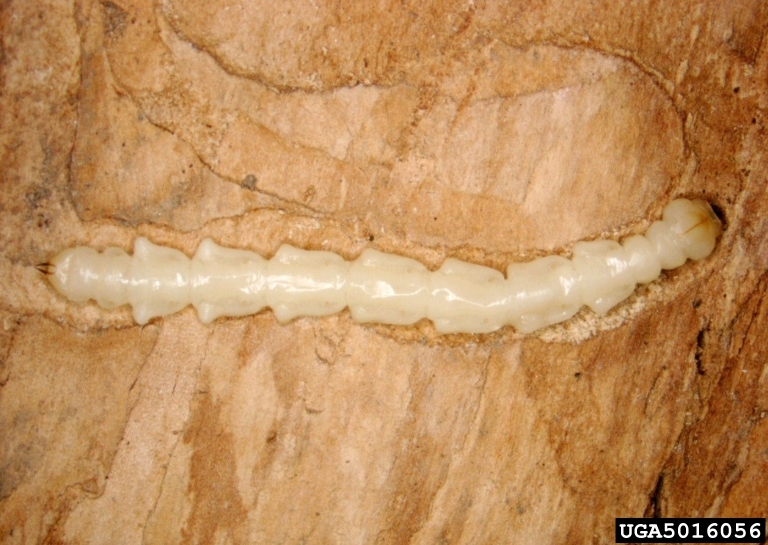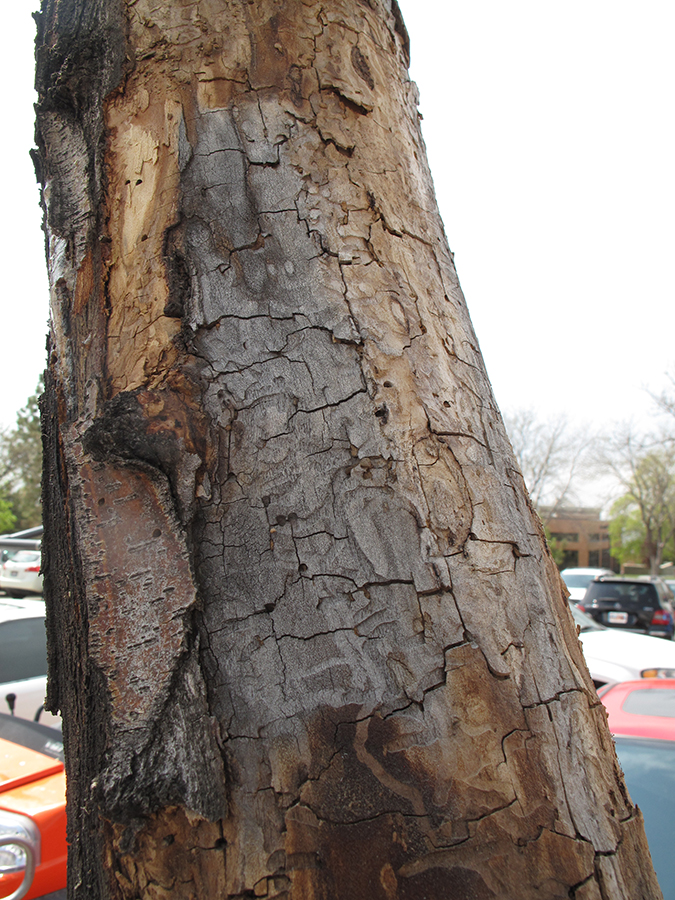Integrated Pest Management
Honeylocust Borer
Agrilus difficilis
Pest Description
- adults: 1/4 – 3/4 inch; slender, black with greenish-purple reflections
- beetle with yellow spots on abdomen below the wings
- larvae: creamy white with an enlarged head area; tapeworm-like appearance
Host Plants, Diet & Damage
- honeylocust
- feed on phloem and etch sapwood of main trunk or branches \
- affect damaged areas of honeylocust bark, especially sun-scalded areas
- wet areas on bark and oozing from bore holes
- create serpentine galleries under the bark
- leave diagnostic, D-shaped exit holes in bark
- can cause canopy dieback or rarely complete tree death
- trees attacked by this insect are usually in poor condition, damaged, or grown in harsh hardscapes
Biology, Life Cycle & Damaging Life Stage
- overwinter as larvae under the bark or in the sapwood
- adults present late-May through September
- eggs laid singly or in groups under bark flaps
- one generation per year
- prefer stressed, weakened trees
- larvae are the damaging stage
IPM Recommendations
- Keep trees well watered.
- Plant in sites that minimize stress on honeylocust.
- Prevent mechanical or environmental injury to trees.
- Apply an insecticide (carbamate; pyrethroid) to bark of stressed or injured trees prior to and during peak beetle flight.




